Mary Anne Yarde's Blog: The Coffee Pot Book Club , page 211
January 30, 2017
Blog Tour ~ The Yankee Years Books 1-3 #HistFic #WW2 @DianneAscroft
The Yankee Years Books 1-3ByDianne Ascroft

After the Allied troops arrived in County Fermanagh, Northern Ireland during the Second World War, life in the quiet, rural county would never be the same again.
The Shadow Ally June 1941: When Ruth Corey finds a letter her journalist beau, Harry Coalter, has written, revealing details of the secret construction of an American flying-boat base, she fears it could destroy America’s neutrality and land him in serious trouble. The letter must not be posted. She enlists the help of attractive Italian-American civilian contractor Frank Long to help her stop Harry. Can Ruth safeguard this military secret and protect her beau?
Acts of Sabotage December 1941: After the attack on Pearl Harbour, the new American flying-boat base must be ready when the first US troops arrive on Northern Ireland’s shores. But, despite Frank’s best efforts, religious conflict within the workforce and thefts on the construction site threaten to scupper the project. Frank confides his worries to Ruth and the pair devise a plan to catch the thieves. Can they stop these acts of sabotage and then what does the future hold for them?
Keeping Her Pledge June 1942: Pearl Grainger’s life is much more exciting since the Allied troops arrived but she is unprepared for the harsh reality of war, and her RCAF boyfriend is determined to protect her from it. Can Pearl keep her pledge to do her bit for the war effort without losing the man she loves?
Book Excerpt
Links for PurchaseAmazon USAmazon UK
About the author
 Dianne Ascroft writes historical and contemporary fiction, often with an Irish connection. Her series The Yankee Years is a collection of Short Reads and novels set in World War II Northern Ireland. After the Allied troops arrived in this outlying part of Great Britain, life there would never be the same again. The series brings those heady, fleeting years to life again, in thrilling and romantic tales of the era.
Dianne Ascroft writes historical and contemporary fiction, often with an Irish connection. Her series The Yankee Years is a collection of Short Reads and novels set in World War II Northern Ireland. After the Allied troops arrived in this outlying part of Great Britain, life there would never be the same again. The series brings those heady, fleeting years to life again, in thrilling and romantic tales of the era.Her other writing includes a ghost tale inspired by the famous Coonian ghost, An Unbidden Visitor; a short story collection, Dancing Shadows, Tramping Hooves, and an historical novel, Hitler and Mars Bars
Useful LinksWebsite: www.dianneascroft.comFacebook: www.facebook.com/DianneAscroftwriterTwitter: www.twitter.com/DianneAscroft
Published on January 30, 2017 00:00
January 25, 2017
Author's Inspiration ~ Angelina Kalahari #amreading @angelinakalhari
It is with the greatest of pleasure that I welcome children’s author, Angelina Kalahari, onto the blog today to talk about the inspiration behind her latest book…
George And The Gargoyle Who Lived In The Garden

Recurring nightmares, a strained relationship with his father, and threatening behaviour from the Fearsome Foursome at school would be challenging for most boys his age. But as an only child with a sensitive, artistic soul, George feels especially alone and ordinary.
When he spends an awesome holiday with his zany Aunt Di, a painter, he stumbles across several exciting secrets. Aunt Di’s London garden contains statues of a Gargoyle, a Griffin, a Unicorn and a Dragon. At first, George thinks of these as just ordinary statues of mythical creatures. But what if they are not? And what about Roy, the robin? Will George survive the adventure when the Witch turns out to be real? Will his life ever be the same again after his magical experiences?
***
Author’s Inspiration
 What inspired me to write George And The Gargoyle Who Lived In The Garden?
What inspired me to write George And The Gargoyle Who Lived In The Garden?Writing a novel takes the question of what inspires us to a whole other level. To finish a novel is a huge investment in time, stamina, discipline and dedication. That's the serious bit. The fun bit is that I get to write the kind of books I like to read.
Writing George And The Gargoyle Who Lived In The Garden was inevitable. Quite simply, I dreamt the book. I dreamt the characters. They wanted to live in the world. My dreams soon turned into daydreams when the characters started to talk to me. I know! In any other career, we'd be carted off by men in white coats!
But the more they talked the clearer their story became, and I knew that I could not deny them their existence. Besides, I have always been fascinated with mythical creatures. What if dragons, gargoyles, unicorns and griffins really exist? Imagine that!
Some research was called for, and it was fascinating and fun to find out more about the myths and legends behind these creatures and why so many people are enthralled by them.
Then, the character of George appeared. A lonely, sensitive boy who felt misunderstood by his father, overprotected by his mother, and as though he didn't fit in with the other children at school.
When I met George I felt that many children, and adults, would be able to relate to him. George was that child in me who felt isolated growing up in the desert. Then, my father died when I was five years old, so I could relate to George's difficult relationship with his father. And being a sensitive artist myself, I totally understood George's feelings of not quite fitting in, of feeling the odd one out.
But thankfully, his mother's sister, Aunt Di, was someone with whom George could bond, and share a love of painting.
It is with Aunt Di, and in her magical garden, that George finally finds love, acceptance and friendship. The fact that his new friends are mythical creatures with whom to have adventures is a bonus. Their strengths and powers become George’s inspiration to overcome his own difficult circumstances, especially when they asked for his help in their fight against the Witch! Feeling more confident, George understood that to give love first, is to receive it.
The theme at the beginning of the novel is that of birds and flight, which represents freedom to George. Later, once he finds his strange band of friends, the theme becomes one of love, and reveals the strong yearning we all have for love and acceptance, even if our tribe of friends is a little off -beat.
Links to PurchaseAmazon US Amazon UK
About the author
Angelina Kalahari entered this life among the red dunes of Namibia’s deserts. Her first sounds merged with the power of the massive yellow moon that lit up the vast African spaces. There, where the heavens presented the splendour that the Milky Way flung across its canvas.
A nomadic childhood enchanted her, as Africa presented the raw beauty of her many faces, while Angelina’s family traversed the desert in search of crops for their herds of karakul sheep. This fertile ambience, filled with strange legends, amazing animals, and wonderful people, afforded Angelina a unique opportunity to live in a world of wonder, and to develop a deep sense of self.
Her mother loved listening to Mario Lanza and other tenors of the day. A record player and records accompanied the family on their travels, and back to their farm. The gift of this divine music found resonance within Angelina's body and called to her soul’s desire to share her voice with the world. She left her magical universe to study with other voice and performance obsessives, which resulted in degrees in drama, singing, and opera.
Angelina continued her nomadic existence as an adult, enthralling audiences with her singing, acting, and directing. These activities allowed her to visit a world far beyond her beloved Africa. She shared her talents on such diverse platforms as opening the busking scheme on London Underground, to a recital at the Royal Opera House, and everything in between.
This led to an invitation to Buckingham Palace, no less, where Angelina met Queen Elizabeth as a reward, and in recognition of her contribution to the music, culture, and economy of the United Kingdom.
Meanwhile, her fascination and obsession with the human vocal instrument grew, together with her knowledge of it. She found herself to be a teacher and sharer of the magic of the voice and performance, and she became co-founder of the North London Performance Academy.
Storytelling, which formed such a big part of her childhood, became an inherent element in her performances, and continued to live in her heart. She never stopped writing down her stories. When, due to illness, it became clear that she would no longer be able to share her voice in the way she had before, writing became the obvious and perfect outlet for her creative expression.
Although she has finished many novels, plays, children’s stories, and had several articles published, The Healing Touchis her published debut novel, the first in a series. George And The Gargoyle Who Lived In The Garden is her first middle grade novel, again the first in a series.
Angelina has found a new colourful and vibrant universe in London. She now lives near a massive park, which satisfies another obsession, her awe and wonder of trees. The intoxicating world of London's artistic scene has introduced Angelina to many inspirational people who have become a close and integral part of her tribe.
The only magnificent creatures that share her home today, apart from all the characters wanting to live in the world through her books, are her husband, her little fur cat daughter, a rapidly diminishing population of house spiders, and a smallish herd of dust mites. Useful Links@angelinakalharihttps://www.facebook.com/authorangelinakalahari/http://angelinakalahari.com/https://soundbath.wordpress.com/
Published on January 25, 2017 00:00
January 23, 2017
Blog Tour ~ SEDAHLIA #HistFic #BGSHF @ctoliver58
SEDAHLIAByCynthia D Toliver

After fleeing post-Civil War Georgia, John Masters, Sr., his wife Virginia Masters, and their rebellious servant Jessie Lindsey have built new lives in Texas ranch country. Now their offspring, Johnny Masters and Rachel Lindsey, are in love. On the isolated, sprawling Sedahlia ranch, their youthful dalliances are largely overlooked until Rachel becomes pregnant, forcing Rachel to leave Texas for a freedman’s school in Georgia.
From the insulated Sedahlia ranch to the Jim Crow south, the rails both separate and unite - parting lovers, reuniting family, pushing out the old, bringing in the new. It is in these settings that the Masters and Lindseys live and love, and their personal needs and mores clash with society. The repercussions rumble through this family and the surrounding community, tearing them asunder and bringing them together as only love and tragedy will.
Links for Purchase
Amazon US
Amazon UK
About the author
 Cynthia D. Toliver is a 1980 graduate of Rice University and a native Texan. She has enjoyed a varied career as an engineer, environmental consultant, educator and author. Sedahlia is her second novel and third book. She has two previously published works, Crown’s Jewel, a historical novel and Come See a Man, an inspirational book. She also hosts a Christian blog, Back to Eden at cynthiatoliver.blogspot.com. Follow Ms. Toliver at www.cynthiatoliver.net.
Cynthia D. Toliver is a 1980 graduate of Rice University and a native Texan. She has enjoyed a varied career as an engineer, environmental consultant, educator and author. Sedahlia is her second novel and third book. She has two previously published works, Crown’s Jewel, a historical novel and Come See a Man, an inspirational book. She also hosts a Christian blog, Back to Eden at cynthiatoliver.blogspot.com. Follow Ms. Toliver at www.cynthiatoliver.net.InspirationMy inspirations come from multiple sources. Sometimes it is a word or title. Other times it may be a thought, observation or dream. From that seed, I will develop my characters and write an outline. The seed for Sedahlia was a dream about disparate lovers. Their story sprouted and grew to the family saga it is today.I love the creative process, from beginning to end. My books are very much character driven. As a writer, I become invested in the characters and their stories. If I've crafted them well, my readers will do the same.Other LinksAuthor website www.cynthiatoliver.netAuthor blog http://www.cynthiatoliver.net/blog/Christian blog, Back to Eden http://cynthiatoliver.blogspot.com/http://facebook.com/cynthia.toliverhttps://www.facebook.com/AuthorCynthiaToliver/twitter @ctoliver58
Published on January 23, 2017 08:14
January 18, 2017
Guest Post ~ Brand Yourself Royalty by Nancy Blanton @nancy_blanton
It is with the greatest of pleasure that author, Nancy Blanton, has come onto the blog to talk about her latest book…
Brand Yourself Royalty

Author branding: A royal undertaking
As an author of historical fiction who also has a strong background in corporate branding, I’ve often considered the brands created by historical figures. For centuries, kings and queens had to create personal brands for the same reasons corporations use branding today—to be memorable and likable by their audiences, and to distinguish themselves from predecessors, competitors or pretenders to their thrones.
Take Henry VIII, for example. In his time, most of the people of England would never meet him, and yet would be called upon to pay taxes and fees, and support an army going to war. He needed to project an image of physical strength, divine empowerment, wise leadership and benevolence. His personal brand, the persona the masses were allowed to know, projected exactly that. Now that history has revealed his true nature and weaknesses, his persona was not exactly authentic, but it was highly effective.
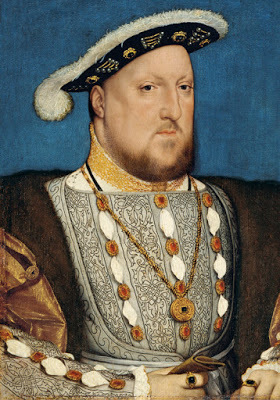 Henry VIII
Henry VIIIThat’s what is called personal branding. Even though he was the figurehead of a powerful government much like a corporation, the success or failure of it depended on the image and actions of one individual. .The basic structure of personal branding is much the same as corporate branding. A strong identity is created to represent the business or individual and to suggest the value in products or activities of that entity. If the entity makes the commitment to that value and consistently delivers it, trust will develop among customers. Over time, the symbol of the brand, or logo, can by itself trigger a feeling of trust. And trust, in turn, generates more business and opens more doors of opportunity.
There are significant differences between corporate and personal branding, especially for an author, artist or business consultant.
While you may be generating and selling multiple products similar to a corporation, it is always yourself you are selling first and foremost. Many readers may try one of your books or paintings, and if they like it they will look for anything in your name to continue enjoying your voice, your style and your command of the medium. As with corporate brands, it’s the consistency of quality that will keep customers coming back.
But these customers expect more. They’re attracted to your own values, style and personality. You are much more likely than a corporation to have direct contact with customers. You must be memorable to the people you meet, and reflect that memory clearly in all the places that may touch the customer when you aren’t there. Personal branding helps you communicate who you are more broadly and efficiently.
When I began to build my author platform to promote my novels, I realized the corporate branding process I had learned over the years could work just as successfully for me. I listed what I considered to be the basic steps, worked through each of them for myself, and then developed a one-page guideline of brand elements that I could refer to often to stay on track.
Soon I realized, if the process could work for me it could work for others, too. And, the process aligned well with research I’d been doing on royal figures. It all came together in Brand Yourself Royally in 8 Simple Steps: Harness the Secrets of Kings and Queens for a Personal Brand that Rules, taking a look at some of the monarchs who created effective brands, and what we can learn from them.
"I have an MBA and consult with authors, small business owners, etc. Your book was a delight to read!
I wish business schools would use it as a text for marketing and brand development."~ Ken Johnson, founder and CEO, Johnson Institute
The book won a silver medal from the Florida Authors and Publishers Association, and has become the basis of hands-on workshops attended by authors, artists, business owners and sales people.
Of course, communication is always changing, and King Henry’s brand would never have survived the instant access allowed by social media. Today’s brands must be authentic. You must do what you promise and demonstrate your own values—it’s what’s called “living the brand.”
But first, what is your brand?
Many who talk about personal branding say it is a concise and compelling statement about what you do and how your products are better than any others. And that is one way of doing it. But the strongest and most enduring brands in the world go deeper than that. Instead of telling customers what you do (they already know that), tell them why you do it. What drives you? What gets you up in the morning? What is that belief deep in your core that stokes your passion and makes you work so hard?
This is something people can relate to on an emotional level, and emotions are what drive our decision-making.
The eight-step personal branding process is designed to help you find that core driver, articulate it, build on it, and make sure it is authentic. From that will flow your mission, your positioning, your tagline, colors and content, and your communications plan.
It’s a simple process, though not easy. It takes time to think it all through. However, once it is accomplished it gives you a decided advantage over your competitors and creates efficiencies for your business.
And best of all, once your brand is defined, it is yours, as unique and valuable as any precious gem, and you are its supreme ruler.
Links for purchaseAmazon USAmazon UK
About the author
 In addition to her branding handbook, Nancy Blanton is the author of two historical novels, a children’s book, and a non-fiction book about the history of oysters in the Pacific Northwest. Sign up for her newsletter her on her website, or follow her on Facebook and Twitter.
In addition to her branding handbook, Nancy Blanton is the author of two historical novels, a children’s book, and a non-fiction book about the history of oysters in the Pacific Northwest. Sign up for her newsletter her on her website, or follow her on Facebook and Twitter.
Published on January 18, 2017 00:00
January 17, 2017
#bookreview ~ The Shining City #HistFic @joan_fallon
THE SHINING CITYThe Al-Andalus Series Book 1ByJoan Fallon
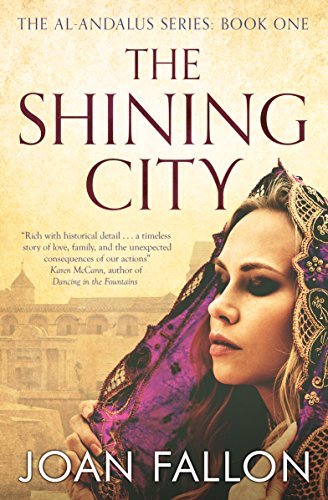
This is the story of a city, a city that is now in ruins: Madinat al Zahra. The year is 947 AD, a time when southern Spain is under the rule of the Moors. The ruler, Caliph al Rahman III is rich, powerful and cultured. His lands are, at long last, at peace and the capital, Córdoba, is considered to be not only the most beautiful city in the civilised world but also the seat of learning and culture. Against this background we meet the artisan Qasim - he and his family have moved to Madinat al Zahra to make their fortune as potters.
Qasim is a good husband and father. He works hard, says his prayers and keeps out of trouble. But Qasim has a secret; his past is not what it seems. When a stranger arrives asking questions about him, he is worried that his secret will be discovered and everything he has worked for will be destroyed. He has to take action.
What did I make of the story?
An innocent question by a curious nephew unlocks the most vivid and painful memories of old Uncle Omar. Omar's memories take him back to the year 974 AD. That was the year where he met the love of his life, but unfortunately for him, she belonged to another. His forbidden love sets off a chain of events that he could never have foreseen, and it takes him on a journey that he never expected.
What an evocative and emotional read Book One of the Al-Andalus Series is. The Shining City is one of those rare gems, where the writing is exquisite, the story is captivating, and the protagonists are memorable.
Fallon caught my attention on the first page and continued to hold it throughout this beautiful story. I adored the characterisation of Isolde. She is so strong of spirit – despite witnessing her mother's brutal murder, as well as suffering the indignity and fear of captivity. Isolde survives the horror of the slave markets and ends up in the harem — life as she knows it is over. Isolde was so believable, so well crafted as a character that I don't think I will forget her in a hurry.
The Shining City reminded me greatly of Margaret Landon's, Anna and the King — albeit a Dark Age version — it has the same sense of grandeur and also despair. This book took my breath away. The descriptions were so vivid, and the history was so elegantly told that it was as if Fallon had opened a door and beckoned me into this world that she has created. I must say that Fallon is the most remarkable tour-guide for 10th Century Spain.
I can not praise this book enough, it is definitely on my repeat-to-read list.
I Highly Recommend.
Links to PurchaseAmazon USAmazon UK
About the author
 The Scottish author, Joan Fallon, began her career as a writer after moving to Spain at the start of the new millennium; her first published work was a social history, 'Daughters of Spain', inspired by the women she met in her new home. The research for this book in turn encouraged her to write the following two novels: 'Spanish Lavender', which is set in Malaga during the early years of the Civil War and 'The House on the Beach', the story of two young women growing up in Franco's Spain. Her subsequent novels have grown out of her experiences living and working in Spain.
The Scottish author, Joan Fallon, began her career as a writer after moving to Spain at the start of the new millennium; her first published work was a social history, 'Daughters of Spain', inspired by the women she met in her new home. The research for this book in turn encouraged her to write the following two novels: 'Spanish Lavender', which is set in Malaga during the early years of the Civil War and 'The House on the Beach', the story of two young women growing up in Franco's Spain. Her subsequent novels have grown out of her experiences living and working in Spain. She is a member of the Society of Authors and the Alliance of Independent Authors.
You can find out more about Joan and her books by going to her website www.joanfallon.co.uk or following her on Twitter @joan_fallon
Published on January 17, 2017 00:00
January 16, 2017
Book Tour ~ Before The Darkness #HistFic #BGSHF @annettecreswell
Before The DarknessByAnnette Creswell
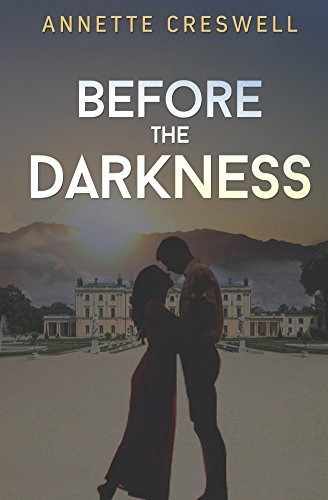
In pre-World War Two London, Penny works as a maternity nurse at the Royal Women's Hospital. Happy in her work and with two really good friends and several doctor suitors, little does she realise how her life will be changed by a chance lunch-time encounter. Who is the ruggedly handsome man who helps her? And how will their lives entwine as the war clouds gather?
Book ExtractRead by Emma Calin
Links For PurchaseAmazon USAmazon UK
About the author
 Annette Creswell is the author of Before The Darkness, published 2015. Creswell loves to hear from readers and can be found on Facebook and Twitter.
Annette Creswell is the author of Before The Darkness, published 2015. Creswell loves to hear from readers and can be found on Facebook and Twitter.
Published on January 16, 2017 00:00
January 13, 2017
#bookreview ~ Brand Yourself Royally in 8 Simple Steps @nancy_blanton
Brand Yourself Royally in 8 Simple Steps:Harness the secrets of kings and queens for apersonal brand that rules
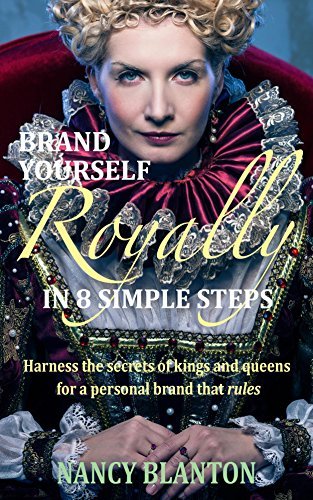
Who needs a personal brand? Anyone who realizes his or her success depends upon being likable and memorable to potential customers. And now you can build an effective personal brand without spending a fortune. Just take your inspiration from the first personal branders, kings and queens.
Combining historical research with corporate branding experience, Nancy Blanton offers authors, artists, consultants and others the gems of wisdom from savvy monarchs and leaders whose successful rule depended on the support of their people. Her simplified branding process and communications planning guide incorporate these time-honored techniques to help you create your own personal brand and then put it into action.
What did I make of the book?
There are many books out there which can tell you how to find your brand, how to stick out in a crowd — I know because I have read a fair few of them, but this one intrigued me right from the beginning.
Ms Blanton looks at a host of historical figures from the past and how their "brand" was used to their advantage. I found this fascinating. Blanton shows us what the brand was for these various historical figures and more importantly how they worked.
The language Blanton uses is simple and not ostentatious. She explains everything very clearly and has a very authoritative voice on her subject. Blanton knows what she is talking about.
After being introduced to the historical figures, Blanton then goes on to show her readers how we can apply similar techniques to our businesses and more importantly how we can benefit from our own personal brand.
I loved the easy step-by-step instructions, and I enjoyed each "exercise." I had never really thought about personal branding before, and Blanton's book really got me thinking, and I think I learnt one of two things about myself along the way as well. Bonus!
This book is a must read for newbie authors, or to anyone who wants to make an impact in their chosen career. This is one of those books that will have pride and place on my shelf, and I will certainly be coming back to it again and again.
I Highly Recommend.
Links for PurchaseAmazon USAmazon UK
About the author
 Nancy Blanton is the author of novels based primarily in Irish history. The Prince of Glencurragh (July 2016), her second novel, is set in 1634 prior to the great rebellion of 1641. Her first novel, Sharavogue, also set in 17th century Ireland, is winner of Florida’s Royal Palm Literary Award.
Nancy Blanton is the author of novels based primarily in Irish history. The Prince of Glencurragh (July 2016), her second novel, is set in 1634 prior to the great rebellion of 1641. Her first novel, Sharavogue, also set in 17th century Ireland, is winner of Florida’s Royal Palm Literary Award. Her award-winning non-fiction book, Brand Yourself Royally in 8 Simple Steps, is a guide for authors, artists, and business consultants who need to establish presence and be memorable to potential customers. The book has become a basis for hands-on personal branding workshops.
She wrote and illustrated a children’s book, The Curious Adventure of Roodle Jones; co-authored the award-winning book Heaven on the Half Shell: the Story of the Pacific Northwest’s Love Affair with the Oyster; and spearheaded production of Rising Tides and Tailwinds, a corporate history book for the Port of Seattle centennial.
Her blog, My Lady’s Closet (WordPress), focuses on writing, books, book promotion, historical fiction, research and travel. Ms. Blanton has worked as a journalist, magazine editor, corporate communications leader and brand manager. She has won numerous awards for professional leadership, writing, advertising and public relations products. She lives in Florida.
Blog: nancyblanton.com
Facebook: Nancy Blanton.Author
Twitter: @nancy_blanton
Published on January 13, 2017 11:16
January 11, 2017
Author’s Inspiration ~ T.E.Taylor #Histfic @timetaylor1
Let’s give a warm welcome to T.E.Taylor. Tim is going to share with us the inspiration behind his latest book…
Zeus of IthomeByT.E.Taylor
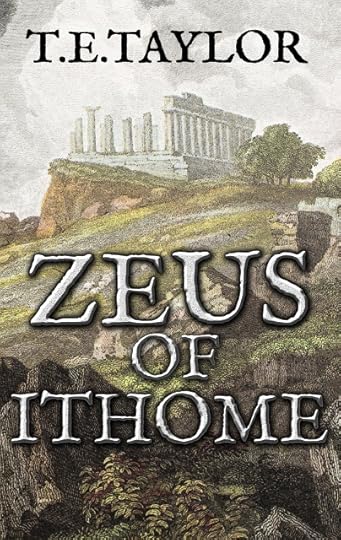
Greece, 373 BC. For three centuries, the Messenian people have been brutally subjugated by their Spartan neighbours and forced to work the land as helot slaves. Diocles, a seventeen-year-old helot, has known no other life but servitude. After an encounter with Spartan assassins, he is forced to flee, leaving behind his family and his sweetheart, Elpis. On Mount Ithome, the ancient sanctuary of the Messenians, he meets Aristomenes, an old rebel who still remembers the proud history of their people and clings to a prophecy that they will one day win back their freedom. A forlorn hope, perhaps. But elsewhere in Greece, there are others too who believe it is time that the power of Sparta was broken.
“Well-crafted and with an engaging narrative, Zeus of Ithome is interspersed with a detailed historical backdrop ... a well-researched novel intertwined with a heartwarming story” – Historical Novels Review
Author’s Inspiration
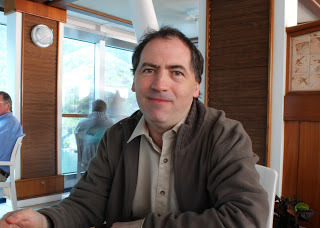 I’d always been fascinated by ancient Greece since I was a child, and I studied Classics at university. The interest continued after I left, but for many years afterwards it didn’t manifest itself in any of my personal projects. That all changed when I was reading a book about Sparta by the historian Paul Cartledge. We all know the Spartans: their reputation for courage and martial prowess continues to be celebrated to this day in books, TV documentaries and Hollywood movies. What is not so well known is that the reason they were able to devote themselves full-time to the arts of war – and to a large extent, the reason they needed to do so – was that quite early in the history of Sparta they conquered their neighbours and turned them into hereditary ‘helot’ slaves, who were forced to work the land for Spartan masters. Thus freed from the need to feed themselves, Spartan male citizens were able to spend all their time – from the age of seven onwards – training for war or fighting it. The helots, collectively necessary but individually expendable, provided ample opportunity for Spartan young guns to try out their killing skills, an activity which was considered useful for culling any uppity helots and keeping the rest firmly under the thumb. All of this I already knew, from my earlier studies. I was also aware that the helots included the original inhabitants of Laconia (the country surrounding Sparta) and also those of Messenia, the land across the Taygetus mountains to the west, who were conquered and enslaved by their Spartan neighbours in the eighth and seventh centuries BC. Beyond that, however, I had never really studied the helots or thought too much about them. They feature as unfortunate bit players in the mainstream history of classical Greece. Reading Cartledge’s discussion of the helots sparked a new and powerful interest in me, and gave birth to the germ of an idea. I was particularly struck by the fact that, although they remained in brutally enforced subjection for three hundred years, the Messenian people never lost their sense of nationhood or desire for freedom, and would rise in revolt when the opportunity arose. It seemed to me that their story was crying out to be told. What also became clear as I read was that, in the mid fourth century BC (a little later than the period I had studied at university) developments elsewhere in Greece provided an opportunity for the Messenians to make one final bid for freedom. These events themselves were full of drama and packed with fascinating characters, such as the visionary Theban general and statesman Epaminondas. There, almost ready made, was the framework for a story that would bring to life the long struggle of the Messenians and reveal the dark side of Sparta and the myth of its invincibility. Quite quickly after that I conceived of the fictional characters whose personal stories would unfold against the backdrop of historical events: Diocles, a young runaway helot; his childhood sweetheart Elpis; and Aristomenes, a hard-bitten old Messenian rebel whom Diocles meets on the slopes of Mount Ithome, the ancient sanctuary of the Messenians. The outline of what would become Zeus of Ithome came together during the course of a long train journey and the rest, as they say, is history!
I’d always been fascinated by ancient Greece since I was a child, and I studied Classics at university. The interest continued after I left, but for many years afterwards it didn’t manifest itself in any of my personal projects. That all changed when I was reading a book about Sparta by the historian Paul Cartledge. We all know the Spartans: their reputation for courage and martial prowess continues to be celebrated to this day in books, TV documentaries and Hollywood movies. What is not so well known is that the reason they were able to devote themselves full-time to the arts of war – and to a large extent, the reason they needed to do so – was that quite early in the history of Sparta they conquered their neighbours and turned them into hereditary ‘helot’ slaves, who were forced to work the land for Spartan masters. Thus freed from the need to feed themselves, Spartan male citizens were able to spend all their time – from the age of seven onwards – training for war or fighting it. The helots, collectively necessary but individually expendable, provided ample opportunity for Spartan young guns to try out their killing skills, an activity which was considered useful for culling any uppity helots and keeping the rest firmly under the thumb. All of this I already knew, from my earlier studies. I was also aware that the helots included the original inhabitants of Laconia (the country surrounding Sparta) and also those of Messenia, the land across the Taygetus mountains to the west, who were conquered and enslaved by their Spartan neighbours in the eighth and seventh centuries BC. Beyond that, however, I had never really studied the helots or thought too much about them. They feature as unfortunate bit players in the mainstream history of classical Greece. Reading Cartledge’s discussion of the helots sparked a new and powerful interest in me, and gave birth to the germ of an idea. I was particularly struck by the fact that, although they remained in brutally enforced subjection for three hundred years, the Messenian people never lost their sense of nationhood or desire for freedom, and would rise in revolt when the opportunity arose. It seemed to me that their story was crying out to be told. What also became clear as I read was that, in the mid fourth century BC (a little later than the period I had studied at university) developments elsewhere in Greece provided an opportunity for the Messenians to make one final bid for freedom. These events themselves were full of drama and packed with fascinating characters, such as the visionary Theban general and statesman Epaminondas. There, almost ready made, was the framework for a story that would bring to life the long struggle of the Messenians and reveal the dark side of Sparta and the myth of its invincibility. Quite quickly after that I conceived of the fictional characters whose personal stories would unfold against the backdrop of historical events: Diocles, a young runaway helot; his childhood sweetheart Elpis; and Aristomenes, a hard-bitten old Messenian rebel whom Diocles meets on the slopes of Mount Ithome, the ancient sanctuary of the Messenians. The outline of what would become Zeus of Ithome came together during the course of a long train journey and the rest, as they say, is history! Links for PurchaseAmazon USAmazon UK
About the author
Tim was born in 1960 in Stoke-on-Trent. He studied Classics at Pembroke College, Oxford (and later Philosophy at Birkbeck, University of London). After a couple of years playing in a rock band, he joined the Civil Service, eventually leaving in 2011 to spend more time writing. Tim now lives in Yorkshire with his wife Rosa and divides his time between creative writing, academic research and part-time teaching and other work for Leeds and Huddersfield Universities. Tim’s first novel, Zeus of Ithome, a historical novel about the struggle of the ancient Messenians to free themselves from Sparta, was published by Crooked Cat in November 2013; his second, Revolution Day in June 2015. Tim also writes poetry and the occasional short story, plays guitar, and likes to walk up hills.
Useful LinksMore info on Zeus of Ithome: http://www.tetaylor.co.uk/zeus-of-ithomeFacebook author page: https://www.facebook.com/timtaylornovelsWebsite: http://www.tetaylor.co.uk/Twitter: https://twitter.com/timetaylor1Blog: https://timwordsblog.wordpress.com/
Published on January 11, 2017 00:00
January 10, 2017
#bookreview ~ Dark Betrayal #Histfic @Oldbrookender
Dark Betrayal(Divided Empire Book 2)Brian Kitchen
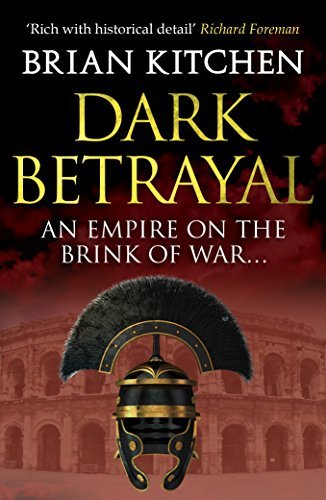
Britain, February 392 AD.
Flavius Vitulasius is at his father’s villa in Ad Trivonam when he receives a letter from his boss, Aulus, informing him of his latest mission.
Flavius is a former soldier who is now a Magistriani. He works with his friend Siward.
The Roman Empire is on the brink of civil war.
The Western Roman Emperor Valentinian has died in mysterious circumstance following a long running dispute with the commanding general of his army, Arbogastes, a Frank.
It is feared that Arbogastes has a candidate he will install on the Western throne as his puppet.
The Eastern Emperor Theodosius, fears that the Empire will once more be plunged into civil war. The war chest is depleted, and Theodosius needs the money to finance an army.
Previously Emperor Theodosius spared the lives of the usurper Magnus Maximus’ wife Elen and their two children when he was overthrown.
Emperor Theodosius wants Flavius and Siward to find Elen. She might know what happened to the Silver Host, a treasure believed to have been hidden by Magnus and his men that can fund the looming civil war.
Joined by their friend Lucius, their mission takes Flavius and Siward throughout Britain and Segontium and across the sea to Hibernia in search of the Silver Host.
Yet an old enemy always seems one step ahead of them: the Saxon woman, Gunhilde, who is working for Arbogastes’ chief agent in Britain.
In Hibernia Flavius and his friends must infiltrate a dangerous court to free a man with vital information. However, what affect will their actions have in the perilous court of the High King?
Returning to Britain, Flavius, Lucius and Siward finally learn the truth about the Silver Host, but a more dangerous situation has now arisen.
The political situation is now on a knife edge.
Flavius, Siward and Lucius soon find out that those who they once thought of as friends will now betray them. A woman who was abandoned and abused as a child, and a group of women loyal to the Goddess, are now their biggest threat.
Rich with historical detail and intrigue, Dark Betrayal is an action adventure and a must for anyone interested in the time when Rome’s rule was threatened by political intrigue and barbarian uprisings.
What did I make of the Story?
The majestic Roman Empire is on the verge of civil war, and in these dark days, there are many who seek to take advantage of the instability of the Roman elite. The time has come to choose a side, for war is now a forgone conclusion.
Flavius Vitulasius, a Magistriani stationed in Briton, has been assigned a new mission. He is to seek out a treasure known only as the Silver Host. But only one person knows where the Silver Host is, and Emperor Theodosius charges Flavius to find the usurper Magnus Maximus’ wife, Elen. Only Elen knows where the Silver Host is hidden. If Flavius can find the Silver Host, then the treasure will finance the now unstoppable civil war.
But this is no easy mission and Flavius will once again come face to face with his own mortality.
What can I say about this book? So much happens, it is like an episode of 24 but set in Roman Briton! Full of intrigue, betrayal, fear, love and adventure this book is up there with the best.
What I loved about this book was the fast pace of the plot. I had absolutely no idea where Kitchen was going with this story — when I thought I had it figured out, Kitchen would throw another proverbial spanner in the works and the story went off in another direction. Talk about suspense. Who was friend? Who was foe? This book will get you thinking.
I adored the characterization of Flavius, not only is he a well-portrayed protagonist, but he is also an extremely likeable one. The story is told in the first person, which is a real treat for the reader as we see everything through Flavius eyes. It is an intimate and enjoyable experience.
The historical accuracies in this book must be commended. Kitchen takes his readers on a personal tour of Roman Briton, and he describes it exactly the way I would imagine it to have been like.
Dark Betrayal is an absorbing read and one you will not want to put down.
A fabulous 5* read.
I Highly Recommend.
Links for PurchaseAmazon USAmazon UK
About the author
 Brian Kitchen lives in Burton upon Trent, England and enjoys walking in the countryside, photography, reading, writing, visiting museums and historic sites & buildings and supporting Burton Albion. He first became interested in the history of Roman Britain as a child and loved the Eagle of the Ninth trilogy of novels by Rosemary Sutcliff. The first of the Flavius Vitulasius novels, Divided Empire is his first published novel.
Brian Kitchen lives in Burton upon Trent, England and enjoys walking in the countryside, photography, reading, writing, visiting museums and historic sites & buildings and supporting Burton Albion. He first became interested in the history of Roman Britain as a child and loved the Eagle of the Ninth trilogy of novels by Rosemary Sutcliff. The first of the Flavius Vitulasius novels, Divided Empire is his first published novel.Should you wish to know more about Flavius & his friends, please visit his website & Facebook page:
facebook.com/FlaviusVitulasius
www.briankitchen.me.uk
Published on January 10, 2017 10:16
January 9, 2017
King Arthur's Camelot has been found...Again?! #Arthurian #history
You may have heard in the news recently that a retired professor, Peter Field, has claimed that he has found the location of King Arthur's Camelot.
I have been holding off blogging about this, as I needed time to collect my thoughts.
There are so many, let us call them, "Arthurian Experts," who are convinced that they have found the real King Arthur. Sometimes there argument seems very compelling at others time, not so much. I have spent many hours studying the life of Arthur, and I have my own conclusions. But then I saw this headline in the Independent...
"King Arthur's legendary Camelot castle location 'discovered' by retired professor."
I sighed very deeply and might have muttered the words "not again." But newspapers are all about punchy headlines that catch the reader’s attention. So I read the article, and now I am in two minds about it. Not the Camelot reference, that is ridiculous, there was no Camelot and that was just the paper trying to catch you eye, but maybe, just maybe, Professor Field is on to something.
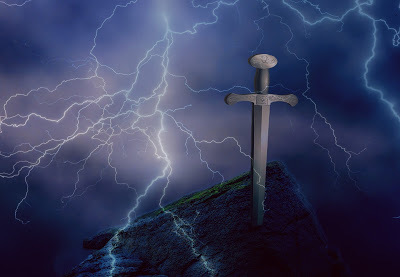
Let's forget about the latest’s findings for a minute and concentrate on Arthur. What do we really know about him?
"A wild boar's fury was Bleiddig ab Eli...But he was not Arthur, and he fedBlack ravens on Catraeth's wall."Aneirin, Y Gododdin (c. 6th century)
The very first mention of Arthur was in a 6th Century poem entitled Y Gododdin. What we can surmise from this poem was that Arthur was a great warrior. He is being used as a comparison. Bleidddig ab Eli was a fierce warrior, but he was not Arthur.
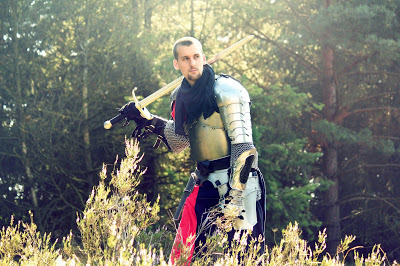
Gildas, in his damning work, "On the Ruin and Conquest of Britain," does not mention Arthur, although he does mention a great victory over the Saxons by the Celts at Badon Hill.
Let's fast forward to the 9th Century. Nennius, a Celtic Chronicler, talks of a great commander called Arthur. Nennuis also gave us the 12 famous battles of Arthur. These Battles took him all over the kingdom of Briton and he fought like a warrior poet. Let’s take a quick look at the location of those battles...
"The first battle was at the mouth of the river called Glein"
This where it gets a little tricky because time has a habit of changing things. Place names come and go. There are two River Glens — one in Northumbria and one in Lincolnshire. Which one could it be?
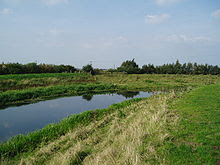 River Glen ~ Lincolnshire
River Glen ~ Lincolnshire
"The second, the third, the fourth and the fifth were on another river, called the Dubglas, which is in the region of Linnuis"
Linnius is in the district of Lindsey. The word Linnius comes from the Celtic name for an island, which is most certainly could have been because the Fens on the Witham were not drained back then. But then again, Dubglas means blackwater, that would put us in Scotland by Loch Lomond.
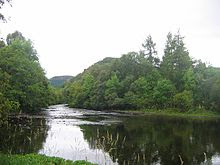 Black Water ~ Scotland
Black Water ~ Scotland
"The sixth battle was on the river called Bassas"
This is anyone’s guess. Could this be in Nottingham or Glasgow, Shropshire or Hampshire. Pick a county and pick a country.
The seventh battle was in the Caledonian Forest, that is, the Battle of Celidon Coit"
The seventh battlefield site is identified as being Caledonian Forest in Scotland. Although dear old Geoffrey of Monmouth suggested it was fought in Lincoln.
 Caledonian Forest in Scotland
Caledonian Forest in Scotland
"The eighth battle was in Guinnion fort"
There are so many probably sights for this battle. But I tend to side with the southern Scotland theory.
"The ninth battle was in the City of the Legion"
Legion is in Chester, which is in the west of Briton and away from any advancing Saxons. What is Arthur doing there? But hang on, the Irish, it is said, had landed in the Mercy and had attacked Chester. It seems it wasn’t just the Saxons that Arthur was fighting.
"The tenth battle was on the bank of the river called Tribruit"
Back to Scotland we go and we should look to the River Frew at Stirling. Or… how about the Severn at Gloucester, or the Eden at Carlisle or how about the River Ribble in Lancashire? Pick a river.
"The eleventh battle was on the hill called Agned"
Edinburgh is the preferred choice.
 Edinburgh Castle
Edinburgh Castle
"The twelfth battle was on Badon Hill…”
Liddington Castle in Swindon is a contender. It certainly falls into the right time period and the village at the foot of the fort is called Badbury. Monmouth suggested Bath. But there is also Bradbury Rings in Dorset. Or how about Solsbury Hill, Somerset?
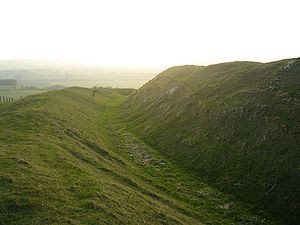 Liddington Castle
Liddington Castle
Nennuis gives us more question than answers. But one thing is for certain. Nennius states that.
"Arthur fought against the Saxons alongside the King of the Britons but he himself was the leader in the battles."
From this we can deduce that Arthur was never a king. He was a warrior. A great one. He was so good that others were being compared to him, but no one could match him, "But he was not Arthur…"
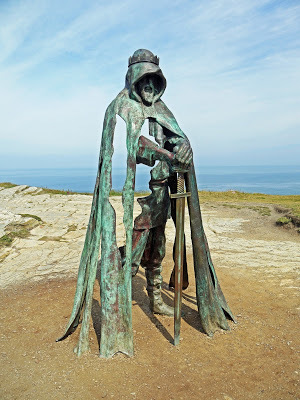
Did Arthur stop the Saxon invasion, for a few years at least? I think he did. According to the Annales of Cambriae (c. 995), Arthur died at the Battle of Camluan (Camlann) along with Mordred. After that, the poets and the Bards got hold of him. And when Geoffrey of Monmouth wrote his History of the Kings of Briton, Arthur, the warrior became King Arthur, the man that we are so familiar with.
Do I think that Professors Fields has found “Camelot.” That’s a tough one, I would have see his thesis on the subject before I made a decision. It is an interesting idea though.
I have been holding off blogging about this, as I needed time to collect my thoughts.
There are so many, let us call them, "Arthurian Experts," who are convinced that they have found the real King Arthur. Sometimes there argument seems very compelling at others time, not so much. I have spent many hours studying the life of Arthur, and I have my own conclusions. But then I saw this headline in the Independent...
"King Arthur's legendary Camelot castle location 'discovered' by retired professor."
I sighed very deeply and might have muttered the words "not again." But newspapers are all about punchy headlines that catch the reader’s attention. So I read the article, and now I am in two minds about it. Not the Camelot reference, that is ridiculous, there was no Camelot and that was just the paper trying to catch you eye, but maybe, just maybe, Professor Field is on to something.

Let's forget about the latest’s findings for a minute and concentrate on Arthur. What do we really know about him?
"A wild boar's fury was Bleiddig ab Eli...But he was not Arthur, and he fedBlack ravens on Catraeth's wall."Aneirin, Y Gododdin (c. 6th century)
The very first mention of Arthur was in a 6th Century poem entitled Y Gododdin. What we can surmise from this poem was that Arthur was a great warrior. He is being used as a comparison. Bleidddig ab Eli was a fierce warrior, but he was not Arthur.

Gildas, in his damning work, "On the Ruin and Conquest of Britain," does not mention Arthur, although he does mention a great victory over the Saxons by the Celts at Badon Hill.
Let's fast forward to the 9th Century. Nennius, a Celtic Chronicler, talks of a great commander called Arthur. Nennuis also gave us the 12 famous battles of Arthur. These Battles took him all over the kingdom of Briton and he fought like a warrior poet. Let’s take a quick look at the location of those battles...
"The first battle was at the mouth of the river called Glein"
This where it gets a little tricky because time has a habit of changing things. Place names come and go. There are two River Glens — one in Northumbria and one in Lincolnshire. Which one could it be?
 River Glen ~ Lincolnshire
River Glen ~ Lincolnshire"The second, the third, the fourth and the fifth were on another river, called the Dubglas, which is in the region of Linnuis"
Linnius is in the district of Lindsey. The word Linnius comes from the Celtic name for an island, which is most certainly could have been because the Fens on the Witham were not drained back then. But then again, Dubglas means blackwater, that would put us in Scotland by Loch Lomond.
 Black Water ~ Scotland
Black Water ~ Scotland"The sixth battle was on the river called Bassas"
This is anyone’s guess. Could this be in Nottingham or Glasgow, Shropshire or Hampshire. Pick a county and pick a country.
The seventh battle was in the Caledonian Forest, that is, the Battle of Celidon Coit"
The seventh battlefield site is identified as being Caledonian Forest in Scotland. Although dear old Geoffrey of Monmouth suggested it was fought in Lincoln.
 Caledonian Forest in Scotland
Caledonian Forest in Scotland"The eighth battle was in Guinnion fort"
There are so many probably sights for this battle. But I tend to side with the southern Scotland theory.
"The ninth battle was in the City of the Legion"
Legion is in Chester, which is in the west of Briton and away from any advancing Saxons. What is Arthur doing there? But hang on, the Irish, it is said, had landed in the Mercy and had attacked Chester. It seems it wasn’t just the Saxons that Arthur was fighting.
"The tenth battle was on the bank of the river called Tribruit"
Back to Scotland we go and we should look to the River Frew at Stirling. Or… how about the Severn at Gloucester, or the Eden at Carlisle or how about the River Ribble in Lancashire? Pick a river.
"The eleventh battle was on the hill called Agned"
Edinburgh is the preferred choice.
 Edinburgh Castle
Edinburgh Castle"The twelfth battle was on Badon Hill…”
Liddington Castle in Swindon is a contender. It certainly falls into the right time period and the village at the foot of the fort is called Badbury. Monmouth suggested Bath. But there is also Bradbury Rings in Dorset. Or how about Solsbury Hill, Somerset?
 Liddington Castle
Liddington CastleNennuis gives us more question than answers. But one thing is for certain. Nennius states that.
"Arthur fought against the Saxons alongside the King of the Britons but he himself was the leader in the battles."
From this we can deduce that Arthur was never a king. He was a warrior. A great one. He was so good that others were being compared to him, but no one could match him, "But he was not Arthur…"

Did Arthur stop the Saxon invasion, for a few years at least? I think he did. According to the Annales of Cambriae (c. 995), Arthur died at the Battle of Camluan (Camlann) along with Mordred. After that, the poets and the Bards got hold of him. And when Geoffrey of Monmouth wrote his History of the Kings of Briton, Arthur, the warrior became King Arthur, the man that we are so familiar with.
Do I think that Professors Fields has found “Camelot.” That’s a tough one, I would have see his thesis on the subject before I made a decision. It is an interesting idea though.
Published on January 09, 2017 00:00
The Coffee Pot Book Club
The Coffee Pot Book Club (formally Myths, Legends, Books, and Coffee Pots) was founded in 2015. Our goal was to create a platform that would help Historical Fiction, Historical Romance and Historical
The Coffee Pot Book Club (formally Myths, Legends, Books, and Coffee Pots) was founded in 2015. Our goal was to create a platform that would help Historical Fiction, Historical Romance and Historical Fantasy authors promote their books and find that sometimes elusive audience. The Coffee Pot Book Club soon became the place for readers to meet new authors (both traditionally published and independently) and discover their fabulous books.
...more
...more
- Mary Anne Yarde's profile
- 159 followers



